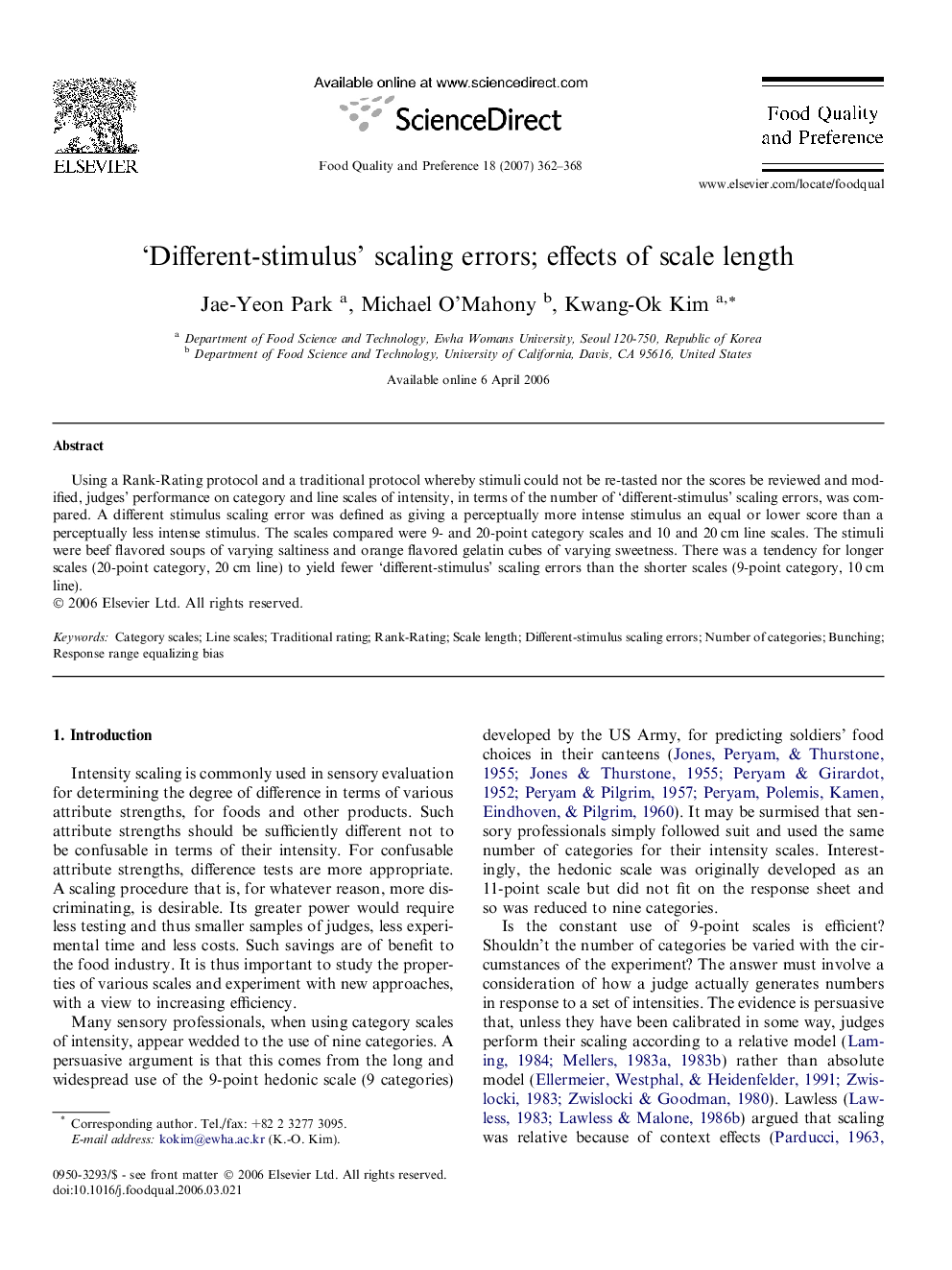| Article ID | Journal | Published Year | Pages | File Type |
|---|---|---|---|---|
| 4318173 | Food Quality and Preference | 2007 | 7 Pages |
Using a Rank-Rating protocol and a traditional protocol whereby stimuli could not be re-tasted nor the scores be reviewed and modified, judges’ performance on category and line scales of intensity, in terms of the number of ‘different-stimulus’ scaling errors, was compared. A different stimulus scaling error was defined as giving a perceptually more intense stimulus an equal or lower score than a perceptually less intense stimulus. The scales compared were 9- and 20-point category scales and 10 and 20 cm line scales. The stimuli were beef flavored soups of varying saltiness and orange flavored gelatin cubes of varying sweetness. There was a tendency for longer scales (20-point category, 20 cm line) to yield fewer ‘different-stimulus’ scaling errors than the shorter scales (9-point category, 10 cm line).
